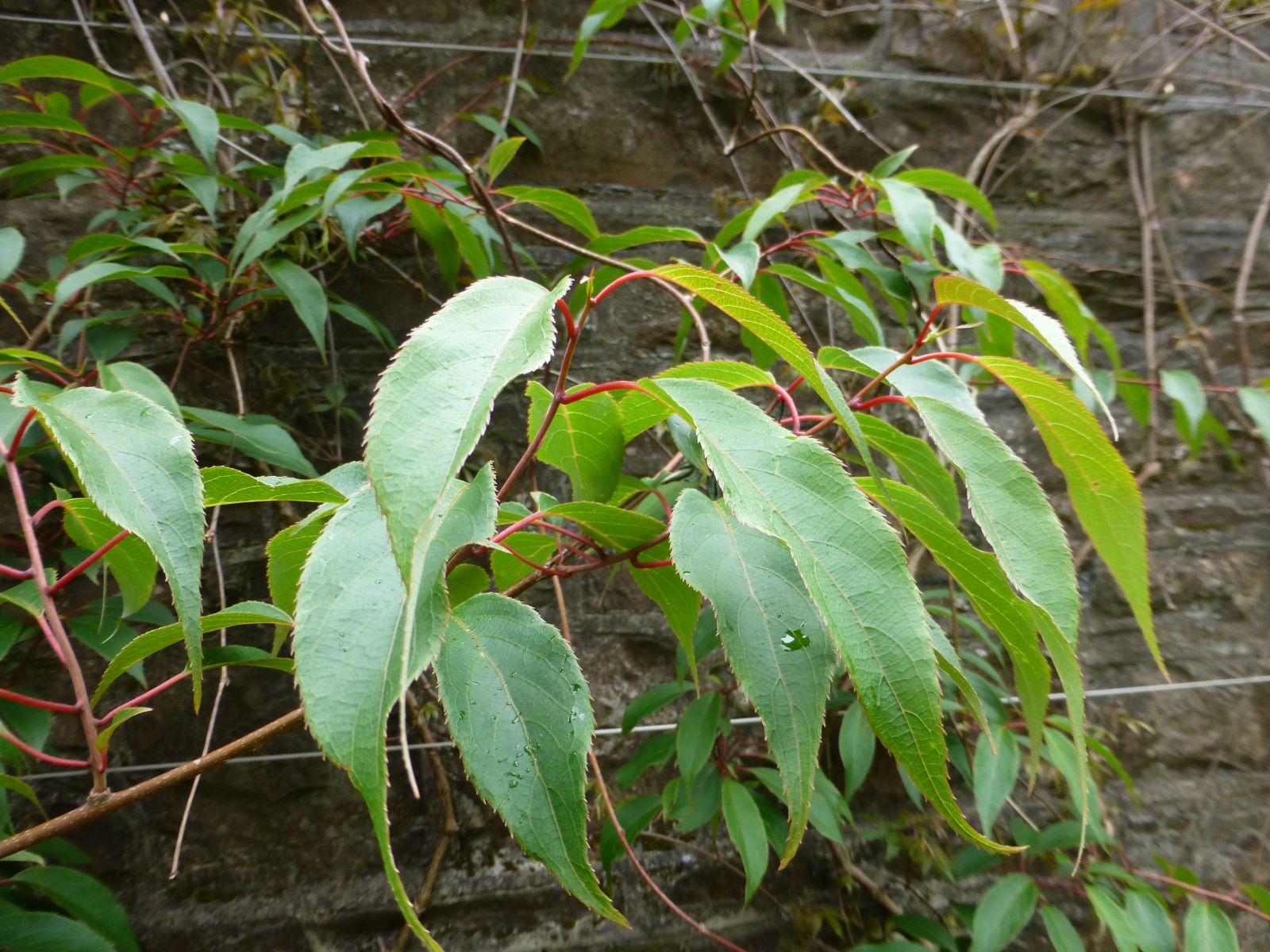Actinidia melanandra
Credits
Article from Bean's Trees and Shrubs Hardy in the British Isles
Recommended citation
'Actinidia melanandra' from the website Trees and Shrubs Online (treesandshrubsonline.
Genus
A tall deciduous climber, with glabrous young shoots and chambered (lamellate) pith. Leaves oblong or narrowly oval, tapered or rounded at the base, slenderly often abruptly pointed, toothed; 21⁄2 to 4 in. long, 1 to 13⁄4 in. wide; glabrous above, glaucous beneath, with tufts of brown down in the vein-axils; stalk 1 to 11⁄2 in. long. Flowers unisexual, white, 3⁄4 to 1 in. wide, females solitary, males three to seven in a short raceme; anthers purple. Fruit egg-shaped, 1 in. or rather more long, reddish brown covered with bloom. Blossoms in June.
Native of Hupeh and Szechwan, China; discovered in the latter province by the French missionary, Père Farges; introduced by Wilson in 1910. It is well distinguished by the glaucous under-surface of the leaves, which are glabrous except for the axil-tufts. It is quite hardy at Kew and has borne fruit there.

